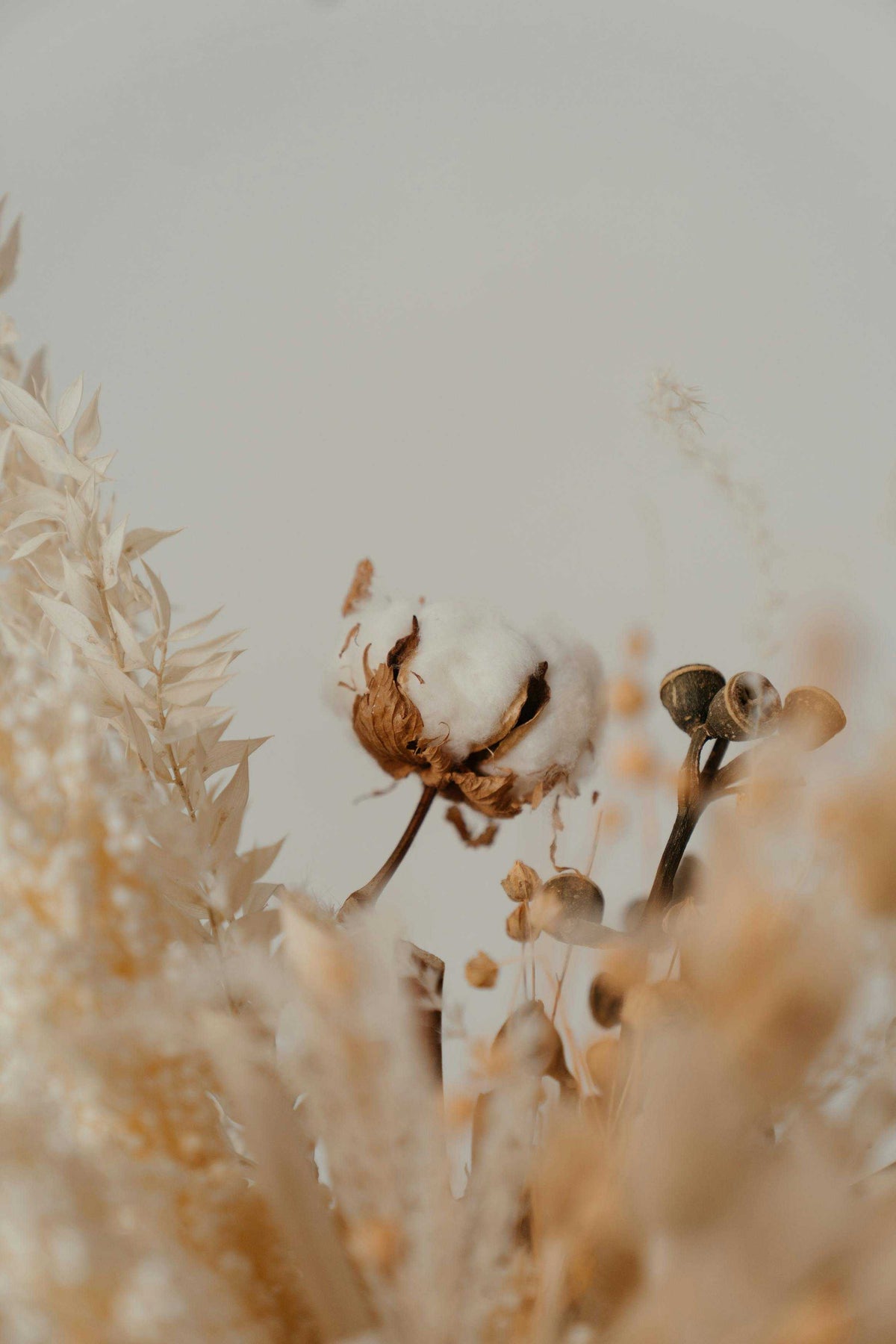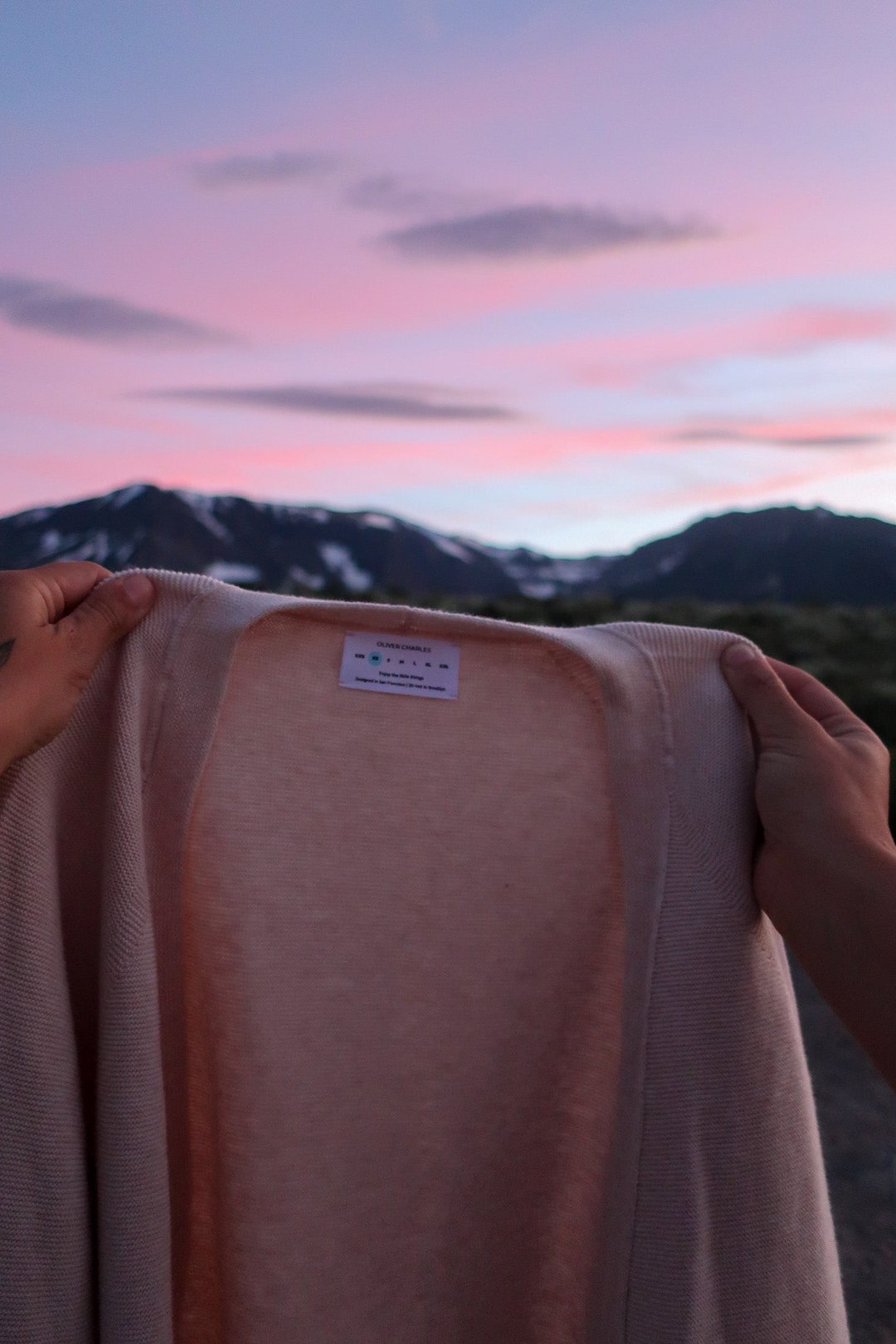Cotton Vs Wool Vs Other Plant Fibers
Is cotton more sustainable than wool, and what are the other plant fibers?
March 23, 2022
By Oliver Charles
Viscose And Modal Is Natural But Wasteful
While natural, many cellulose-based fibers, such as viscose and cotton, come with significant environmental costs. Even the most sustainable plant-based fibers, such as hemp, are less thermoregulating and odor-resistant than the wool fibers we chose for our sweaters.
A closer look...
Cellulose-based fibers come from plants, either by harvesting their naturally produced fibers or through chemical extraction.
Cotton simply comes from the cotton plant. However, others come from less known plants like cannabis sativa... or trees like bamboo and eucalyptus... and even familiar plants like pineapple and banana. Together, cellulose-based fibers make up 30% of the world's production of yarn fiber. (A New Textiles Economy).
Is Cotton Sustainable?
Cellulose-based fibers are natural and biodegradable... so what's the meaning of their bad sustainability reputation? One important consideration is how many chemicals go into the production of cellulose-based fibers.
Non-organic cotton makes up 70% of the world's cellulose-based fiber production. Non-organic cotton is not inherently unsustainable. However, due to global popularity, the fiber is produced at a huge scale requiring 440 million pounds of pesticides annually (Textile Exchange).
Despite accounting for 3% of agricultural land usage globally, the production of cotton accounts for as much as 16% of all pesticides used (A New Textiles Economy).
As an alternative to cotton, other cellulose-based fibers, such as SeaCell and organic cotton are growing in popularity.
SeaCell has similar qualities to cotton, but grows faster without pesticides, fresh water, and arable land to produce.

Are Viscose, Lyocell, And Modal Sustainable?
Viscose, lyocell, modal, and acetate are names for the different processes used to create rayon yarn fiber from wood pulp. Viscose is the worst offender in the list due to it's toxic and wasteful production method.
For instance, viscose factories emit nearly 90,000 pounds of carbon disulfide into the air, which is poisonous for neighboring residents and factory workers. Additionally, 50% of the world's production of viscose is derived from threatened or ancient forest, and 70% of the wood used in the production of viscose is dumped or incinerated due to inefficiency (Earthrise, Textile Exchange).
While most cellulose rayon comes with sustainability tradeoffs, there is one worth noting that is significantly more sustainable and gaining popularity... the most sustainable production method for cellulose rayon is called SeaCell lyocell, where 99% of the chemicals used in the manufacturing are recycled in a closed-loop process. Lyocell is also called "Tencel".

How Breathable Is Cotton?
Unlike the materials we use in our sweater, the vast majority of cellulose-based fiber have poor odor-resistance. This is due to their inability to efficiently wick water vapor. Cellulose-based fiber does not have the same crimped structure of wool based fiber. Instead, cellulose-based fibers are hydrophilic, meaning they easily absorb and trap moisture within the fiber cell walls.

How Odor-Resistant Is Cotton And Lyocell?
There's a term that describes cellulose-based fiber called “capillary action” where a negative charge in the fiber attracts water molecules. High moisture absorption and poor wicking leads to bacterial growth and thus odor (Sciencing).
Cellulose rayon, however, due to it's human-made qualities has improved wicking when compared to its 100% natural cellulose sibling. Lyocell for instance is claimed to have sub-microscopic canals between the individual nano-fibers that regulate the absorption and release of moisture (Science Direct).
How Thermoregulating Is Cotton?
Cellulose-based fiber has a low thermal conductivity. This means the fibers are inefficient at transferring heat. If you've ever wondered why campers avoid cotton in the backcountry, it's because cellulose-based fibers like cotton absorb water and take a long time to dry (Science Direct).

Are Plant-Based Fibers Elastic?
Unlike the scaled structure of wool fiber, cellulose-based fiber is made up of tightly packed crystal molecules which are easy to care for and are not prone to shrinkage. The high density of molecules reduces elasticity and increases durability. Some cellulose-based fiber, such as the "bast" fiber of hemp or banana leaves is taken directly from the stems of plants, dryed, and spun into coarse, stiff, but extremely durable textiles.

Is Cotton Hypoallergenic?
The two main causes of clothing allergies are related to chemicals use and fineness of the fibers. The majority of cellulose-based fiber is 100% natural, very fine, and in theory shouldn't cause allergies. One way to avoid allergies to clothing made of cellulose-based fiber is to avoid fibers that require a lot of chemicals to produce.
Most cellulose-based fiber, for instance, is farmed with many chemical pesticides, which may cause an allergic reaction. Organic farmed cellulose-based fiber ensures that irritating chemical were not used in the growing of the fiber. Organic cotton is growing in popularity for both sustainability and hypoallergenic purposes.
If you believe that every good wardrobe starts with owning less and owning better, consider buying yourself an OLIVER CHARLES sweater.
Shop NowPacking A Capsule Wardrobe For Travel
Testing the packability of the Oliver Charles All-Season Quarter Zip.
Read moreA Perfect Fall Day In My 100% Yak Wool Cardigan
The sweater’s pockets were perfect for storing dog treats on my walk, making me new furry friends.
Read more7 Day Challenge: One Yak Wool Vest Simplified My Entire Week
An honest review of the Cardigan Vest from a busy and pregnant toddler mom.
Read more



